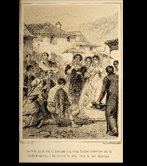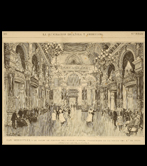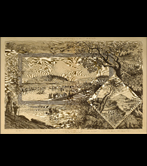La Belle Époque
Although chronologically speaking it is an epoch linked to the 20th century – historians situate it between 1895 and the end of the First World War in 1918 – the roots of the so-called Belle Époque run deep into the 19th century.
For the Basques, the precedent was set during the reign of Isabel II, when she came to San Sebastián in 1845 to bathe in the sea for health reasons. She returned on various occasions, if sporadically, until her exile in 1868. As they spent their summers in nearby Biarritz, the Imperial French couple, Napoleon III and Eugenia de Montijo, visited Donostia on various occasions between 1856 and 1865. These visits were a deciding factor in turning San Sebastián into a tourist destination.
The capital of Gipuzkoa became the definitive tourist destination for the elite –the Spanish elite, that is, as there wasn’t any other – after 1887 when the Regent María Cristina of Habsburg, the widow of Alfonso XII, decided to come every year. With the exception of 1898, she returned every year until 1929. The Spanish summer Court attracted politicians, aristocrats and the upper bourgeoisie, both Spanish and foreign. The visit in 1889 by Queen Victoria of England, leader of what was then the world’s most powerful nation, consolidated the city’s position as a tourist destination for the privileged classes.
Following the example of Biarritz, Donostia built hotels and leisure facilities. The outstanding piece of architecture that grew out of 19th-century tourism in Donostia was the casino, now the town hall, built in 1889. The building of the Miramar royal palace in 1893 guaranteed the presence of the royal family every summer.




